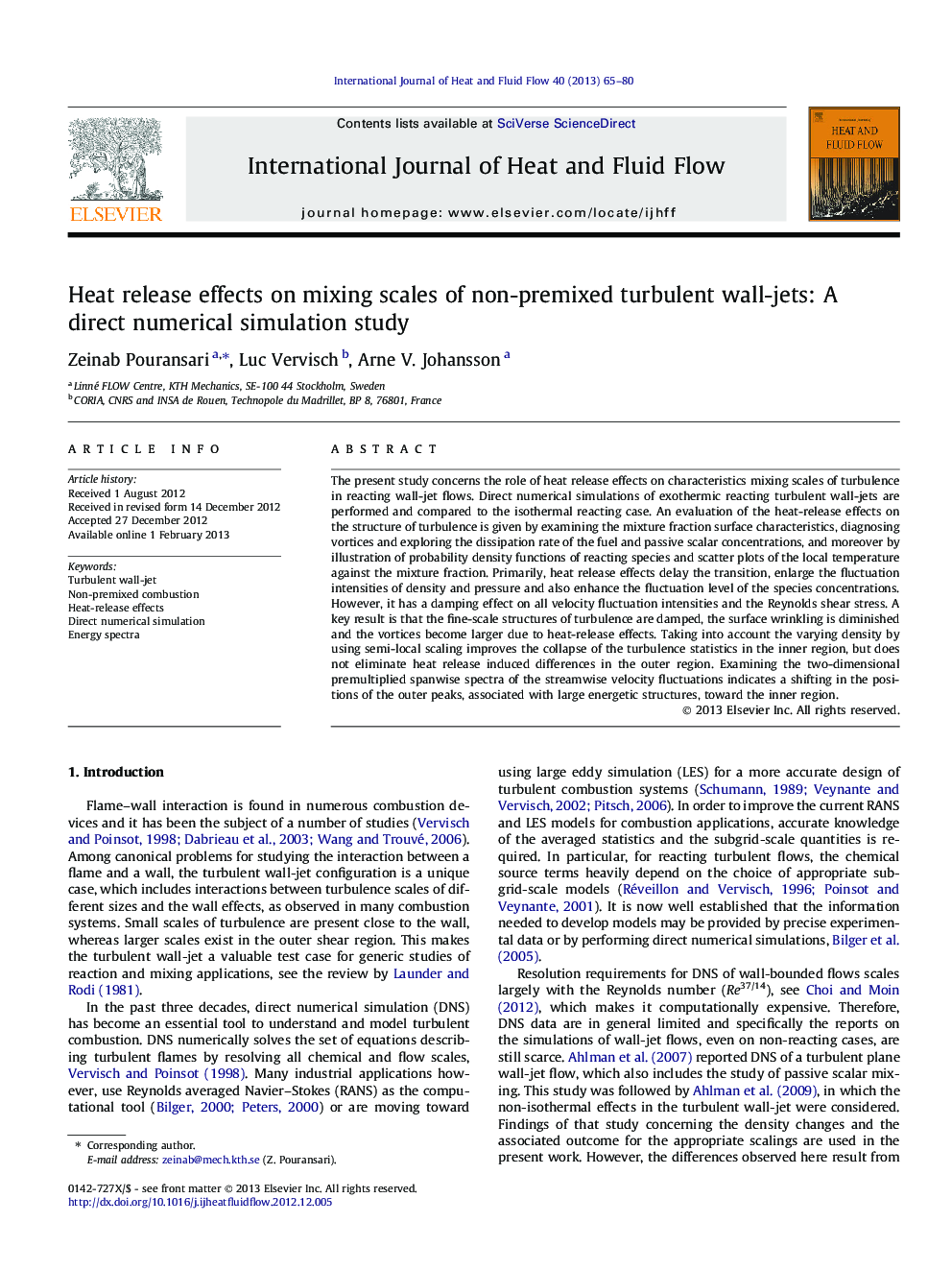| کد مقاله | کد نشریه | سال انتشار | مقاله انگلیسی | نسخه تمام متن |
|---|---|---|---|---|
| 655432 | 1457641 | 2013 | 16 صفحه PDF | دانلود رایگان |

The present study concerns the role of heat release effects on characteristics mixing scales of turbulence in reacting wall-jet flows. Direct numerical simulations of exothermic reacting turbulent wall-jets are performed and compared to the isothermal reacting case. An evaluation of the heat-release effects on the structure of turbulence is given by examining the mixture fraction surface characteristics, diagnosing vortices and exploring the dissipation rate of the fuel and passive scalar concentrations, and moreover by illustration of probability density functions of reacting species and scatter plots of the local temperature against the mixture fraction. Primarily, heat release effects delay the transition, enlarge the fluctuation intensities of density and pressure and also enhance the fluctuation level of the species concentrations. However, it has a damping effect on all velocity fluctuation intensities and the Reynolds shear stress. A key result is that the fine-scale structures of turbulence are damped, the surface wrinkling is diminished and the vortices become larger due to heat-release effects. Taking into account the varying density by using semi-local scaling improves the collapse of the turbulence statistics in the inner region, but does not eliminate heat release induced differences in the outer region. Examining the two-dimensional premultiplied spanwise spectra of the streamwise velocity fluctuations indicates a shifting in the positions of the outer peaks, associated with large energetic structures, toward the inner region.
► A non-premixed turbulent flame close to a solid surface is studied using DNS.
► Heat release effects delay transition and enlarge fluctuation of density and pressure.
► The fine-scale structures damped and surface wrinkling diminished due to heat-release.
► Using semilocal scaling improves the collapse of turbulence statistic in inner region.
► There are regions of the flame where considerable (up to 10%) premixed burning occurs.
Journal: International Journal of Heat and Fluid Flow - Volume 40, April 2013, Pages 65–80